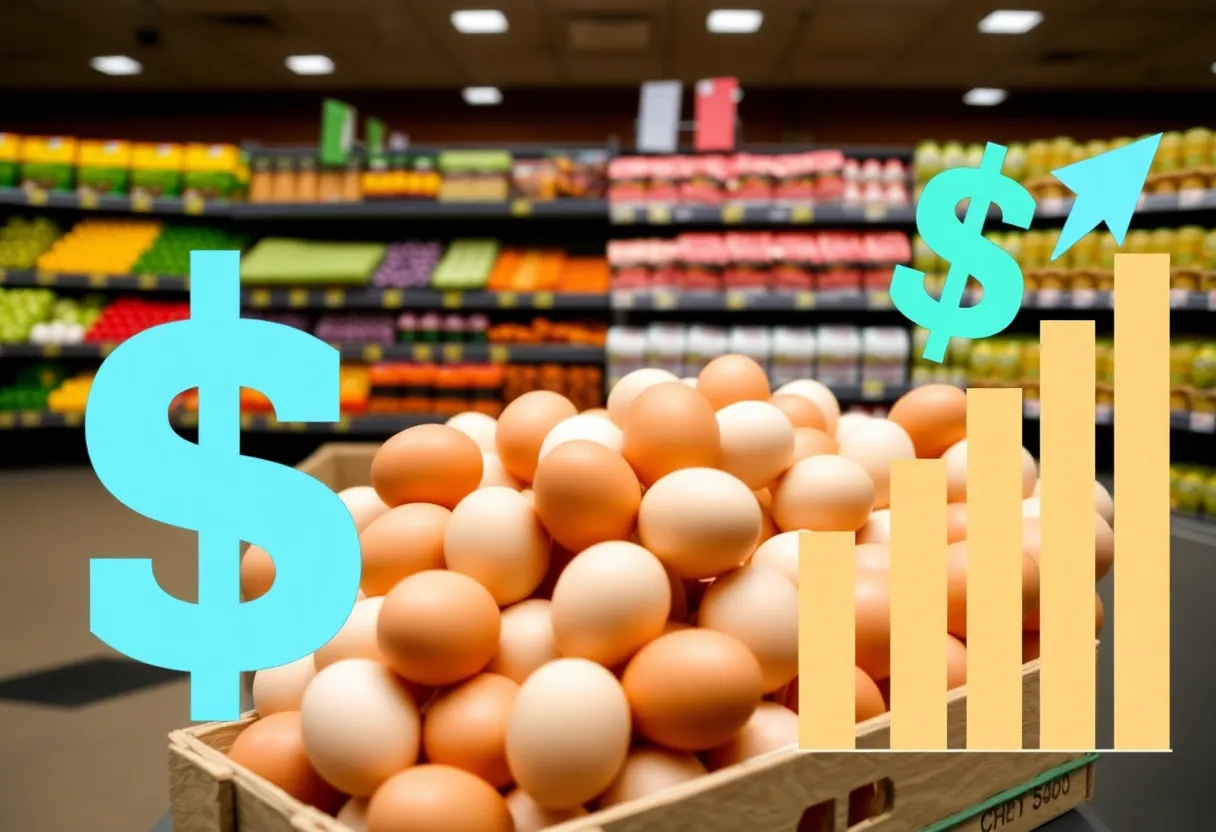

The impact of rising egg prices as shown in a grocery store.
Want to target the right audience? Sponsor our site and choose your specific industry to connect with a relevant audience.
Prominent brand mentions across targeted, industry-focused articles
High-visibility placements that speak directly to an engaged local audience
Guaranteed coverage that maximizes exposure and reinforces your brand presence
Interested in seeing what sponsored content looks like on our platform?
May’s Roofing & Contracting
Forwal Construction
NSC Clips
Real Internet Sales
Suited
Florida4Golf
Click the button below to sponsor our articles:
Sponsor Our ArticlesIn response to soaring egg prices that reached an average of $4.95 per dozen in January, the U.S. government has unveiled a $1 billion plan. The initiative aims to stabilize egg prices affected by the avian flu crisis which has decimated poultry production, leading to a predicted 41.1% increase in egg costs. The plan includes financial aid for farmers, improvements in biosecurity, and potential easing of regulations. With Turkey expected to send 420 million eggs this year, the government hopes to alleviate some pressure on egg prices in the coming months.
Can you believe that egg prices reached an astonishing average of $4.95 per dozen in January? That’s nearly double what folks were paying just a year ago! Thanks to the ongoing avian flu crisis, Americans are feeling the pinch at grocery stores, and the U.S. government is stepping in to help right the ship with a hefty $1 billion plan.
It’s no secret that the avian flu has wreaked havoc on the poultry industry since 2022, affecting a whopping 166 million birds. The impact has been particularly severe on egg-laying hens, leaving a significant gap in supply and causing those sky-high prices. Recently, 23 million birds were affected in just one month—yikes!
The U.S. Department of Agriculture (USDA) painted a grim picture recently, predicting an eye-popping 41.1% increase in egg prices for this year, a drastic revision from an earlier estimate of 20%. Pair that with grocery stores slapping on purchase limits for eggs and some restaurants adding surcharges on egg-heavy dishes, and it’s clear that things are getting serious!
In response to this challenging landscape, Agriculture Secretary Brooke Rollins announced the ambitious plan, which won’t provide instant relief, but aims to stabilize the situation within three to six months. The strategy includes a five-pronged approach:
Interestingly, Turkey is expected to send approximately 420 million eggs this year to the U.S., giving a slight boost to availability.
Although this is great news, experts warn us that bouncing back won’t be a walk in the park. Regaining our domestic egg-laying capacity is complex, attributed to the biological lag in egg production. And on top of that, there’s a growing demand for cage-free eggs which, combined with state regulations, complicates the situation further.
Many industry leaders are expressing worry about monopoly power among major egg producers, particularly with Cal-Maine Foods, which controls about 20% of the market. There are voices calling for a closer look at the supply chain to identify any unfair pricing practices. The USDA has even acknowledged signs of monopolistic behavior in the egg supply sector.
The avian flu situation continues to put pressure on farmers, forcing them to choose between culling infected birds or facing significant economic losses. Other factors like rising transportation and feed costs, together with labor shortages, further inflate production costs.
While prices are currently soaring, experts remind us that the hikes are not necessarily due to price gouging. Rather, they reflect the broader challenges within supply chains and market dynamics. As farmers tackle these hurdles with the help of the government’s extensive plan, there’s hope that egg prices may finally come back down to earth.
Stay tuned as this story unfolds and let’s hope for a sunny-side-up resolution in the egg market!
News Summary Spectrum News Michigan has officially launched, offering Spectrum TV customers statewide access to…
News Summary The 'Make MI Home' initiative aims to combat Michigan's population decline by appealing…
News Summary In Michigan, the Attorney General's Office has identified a significant increase in toll…
News Summary The NAACP is raising concerns over Elon Musk's xAI supercomputer project in South…
News Summary The NAACP has raised significant environmental and health concerns regarding the xAI-operated supercomputer…
News Summary Washington, D.C. has achieved record-breaking tourism numbers, attracting 27 million visitors and generating…